
The biomedical engineering research focus spans a wide range of fields within the department, including nanotechnology, silicon devices and integrated circuits, circuits and systems, computer software, communications and information systems, pattern analysis and machine intelligence, systems and controls, wireless communications, as well as antennas, microwaves, and wave optics. Our diverse research portfolio drives innovation at the intersection of engineering and healthcare, pushing the boundaries of technology to improve human well-being.
Faculty members in the biomedical research group hold prestigious research chairs, including the RIM Industrial Research Chair and a Tier 1 Canada Research Chair.
Current research projects include innovations in ultrasound imaging, therapeutic ultrasound biophysics, small animal micro-CT, PACS (Picture Archiving and Communication System), online human movement analysis for stroke rehabilitation, feedback mechanisms for hip and knee replacement recovery, a low-cost x-ray imaging system, photon-counting circuits for biomedical imaging, affordable x-ray detectors using amorphous silicon technology, high-resolution x-ray detectors based on amorphous selenium and CMOS, Transcranial Magnetic Stimulation (TMS), a Cancer Sniffer for skin cancer pre-screening using millimeter-wave reflectometry, and enabling technologies for intelligent wireless sensor networks in mobile health.
Graduate students gain hands-on experience in biomedical engineering, making them highly sought after by both academia and industry. Our alumni have gone on to work in top organizations such as the Department of Radiology at Stanford, the FDA’s Medical Devices Regulatory Group, PerkinElmer Digital X-ray Group, Apple’s Biomedical Division, and Illumina Genomics.
The research spans a wide range of innovative and impactful areas, including:
- Biomedical ultrasound imaging and therapy
- Medical diagnostic X-ray imaging
- Medical image processing (denoising, registration, segmentation, restoration, etc.)
- Medical image analysis (object detection, tracking, and automated diagnosis)
- Telemedicine (real-time image/video transmission)
- Linear stochastic systems and human motion analysis
- Machine learning
- Human-robot interaction
- MEMS/MOEMS and CMOS integration
- Lab-on-chip devices and medical diagnostics
- Biocompatibility of patterned metals
- Circuits for implantable neural recording systems
- Nonlinear systems
- Optimal data compression algorithms (lossy and lossless)
- Bioelectromagnetics and robotics
Facilities and research groups supporting this research field:
Faculty members participating in biomedical engineering research:
Dayan Ban
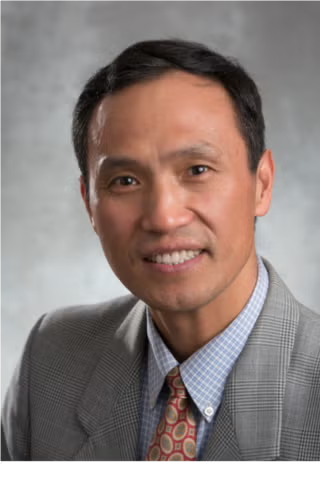
Biography
Dr. Dayan Ban is a professor in the Department of Electrical and Computer Engineering, Associate Director for the Centre for Intelligent Antenna and Radio Systems, and a researcher at the Waterloo Institute for Nanotechnology. His expertise lies in the conversion of near-infrared light directly to visible light, design and fabrication of high-performance quantum devices and the development of ultra-sensitive surface plasmon sensors.
Dr. Ban successfully improved the efficiency of hybrid organic/inorganic devices by more than one order of magnitude and applied time-domain terahertz spectroscopy to study the device physics of terahertz quantum cascade lasers. Dr. Ban’s research has also accomplished the fabrication of prototype hybrid organic/inorganic devices by direct tandem integration and the study of the effects of interfacial states on device performance. These devices are responsible for the conversion of near-infrared light directly to visible light (green) at room temperature.
Dr. Ban pioneered the development of new methods in scanning probe microscopy to observe, with nanometric spatial resolution, two-dimensional profiles of conductivity and potential inside actively driven lasers. He also resolved the nanoscopic reason for anomalously high series resistance encountered in ridge waveguide lasers. In addition, Dr. Ban reported the first direct experimental observation of electron overbarrier leakage in operating buried heterostructure multi-quantum-well –lasers. His work has provided the first experimental visualization of the inner workings of operating semiconductor lasers and has also provided a platform for enabling tools for quantum semiconductor device and nanotechnology research.
Research interests
- Semiconductor Quantum Devices
- Photonics
- THz Technology
- Nanotechnology
- Atomic Force Microscope
- Fiber-Optical Communication System
- Silicon Devices
- Terahertz Quantum Cascade Lasers
- Biophotonics
- Scanning Probe Microscopy
- Connectivity and Internet of Things (IoT)
- Nanofabrication
- IoT Devices
- Application Domains
James Barby

Biography
Dr. James Barby is an associate professor in the Department of Electrical and Computer Engineering at the University of Waterloo.
His research interests include mixed-mode and behavioural models of devices, complex analog or mixed-mode circuits, simulation of switched networks for communications and power electronics, analysis methods and models for digital, analog and mixed-signal VLSI systems, and optimal fit numerical approximations of transistor models.
In addition to his research work, Dr. Barby has written journal papers for IEEE and annual conference papers for the International Symposium on Circuits and Systems.
Research interests
- mixed-mode and behavioural models of devices
- complex analog or mixed-mode circuits
- simulation of switched networks
- analog and mixed-signal VLSI systems
- optimal fit numerical approximations of transistor
- circuits Design & VLSI
Kerstin Dautenhahn
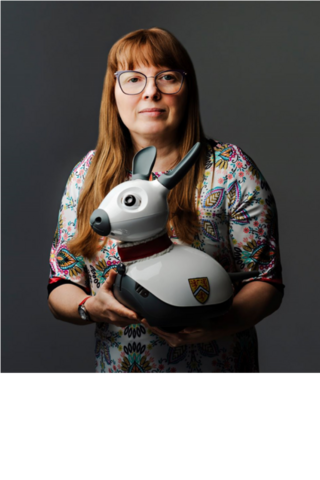
Biography
Dr. Kerstin Dautenhahn is a professor in the Department of Electrical and Computer Engineering at the University of Waterloo. She is a Tier 2 Canada Research Chair in Socially Intelligent Robotics. Previously she held a Canada 150 Research Chair in Intelligent Robotics. Dr. Dautenhahn is cross-appointed to the David R. Cheriton School of Computer Science, the Department of Mechanical and Mechatronics Engineering, and the Department of Systems Design Engineering at the University of Waterloo. She is a visiting professor at the University of Hertfordshire, UK. At Waterloo, she is the Director of the Social and Intelligent Robotics Research Laboratory (SIRRL).
The main areas of her research are human-robot interaction, social robotics, assistive technology, and health technologies. She is editor-in-chief (jointly with Prof. Angelo Cangelosi of the University of Manchester, UK) of the Journal Interaction Studies — Social Behaviour and Communication in Biological and Artificial Systems, published by John Benjamins Publishing Company, editorial board member of Adaptive Behavior, Sage Publications, associate editor of the International Journal of Social Robotics, published by Springer, and associate editor of IEEE Transactions on Cognitive and Developmental Systems. She is an editor of the book series Advances in Interaction Studies, published by John Benjamins Publishing Company. Dr. Dautenhahn is on the Advisory Board of the journal AI and Society (Springer). She is a Fellow of the Royal Society of Canada (RSC), a Fellow of the IEEE, a member of the ACM, and a Lifelong Fellow of AISB, as well as a member of the Executive Board of the International Foundation for Responsible Robotics. Since 2006, she has been part of the Standing Steering Committee of the IEEE conference RO-MAN (Human and Robot Interactive Communication).
Research interests
- Human-Robot Interaction
- Social Robotics
- Robot-Assisted Therapy
- Robot-Mediated Instruction
- Assistive Robotics
- Artificial Intelligence
- Artificial Life
Sebastian Fischmeister

Biography
Dr. Sebastian Fischmeister is a professor in the Department of Electrical and Computer Engineering and cross-appointed to the Cheriton School of Computer Science at the University of Waterloo, where he leads the Real-time Embedded Software Group.
Dr. Fischmeister performs systems research at the intersection of software technology, distributed systems, and formal methods. His preferred application area includes distributed real-time embedded systems in the domain of automotive systems, avionics, and medical devices. Key highlights of his research include a framework for scalable location-based pervasive computing systems and tree communication schedules for verifiable but flexible real-time communication. A slightly modified version of his real-time communication framework has been used for the plug-and-play demonstration of medical devices and to promote the ASTM F29.21 standard. He is now working on (a) information extraction of time-sensitive systems, (b) using data analytics of extracted information for system validation and security, (c) runtime monitoring of safety-critical systems, and (d) reliable and robust performance evaluation of embedded systems.
Research interests
- Real-time Systems
- Embedded Systems
- Software Technology
- Embedded Networking
- Computer Engineering
- Software Engineering
- Autonomous Vehicles
- Autonomous and Connected Cars
- Big Data/Analytics
- Sensors and Devices
- Safety-Critical Systems
- Automotive
- Operational Artificial Intelligence
- Robotics
- Cybersecurity
- Infrastructure Integrity
- Network Security
- Operational Security
Vincent Gaudet

Biography
Dr. Vincent Gaudet is a professor in the Department of Electrical and Computer Engineering at the University of Waterloo.
His research interests focus on high-speed and energy-efficient microelectronic circuits applied to digital communication systems and signal processing. He is particularly interested in stochastic computing systems and multiple-valued logic. He has worked on low-density parity-check (LDPC) and turbo decoders, multiple-access channels, implantable neural recording systems, and integrated lab-on-chip instrumentation circuitry.
Dr. Gaudet is currently a Senior Member of the IEEE, and holds many editorial positions. In 2009, he received the Petro Canada Young Innovator Award to recognize and support his work of outstanding young faculty-based research.
Research interests
- VLSI circuits
- Analog circuits
- Mixed-signal circuits
- Digital circuits
- CMOS design
- Low-power circuits
- LDPC decoding
- Turbo decoding
- Iterative decoding
- Stochastic computation
- Connectivity and Internet of Things
- Digital design and fabrication technologies
- Embedded systems
- Information systems
- Sensors and devices
- Wireless communications/networking
- Microelectronic circuits
- Digital communications
- Signal processing
- Devices
Karim Karim
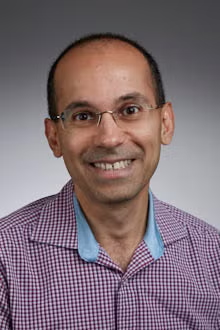
Biography
Dr. Karim S. Karim is a professor in the Department of Electrical and Computer Engineering at the University of Waterloo, where he leads the Silicon Thin-Film Applied Research Group. He has secured more than $15M in research grant funding, trained over 40 PhD and MASc students, and co-authored 250+ publications and 50+ patents.
He is a founder and chief technology officer of KA Imaging, a University of Waterloo spinoff company that makes innovative X-ray detectors and systems for medical, veterinary, scientific and industrial markets. Dr. Karim has developed novel imaging devices and systems since 1998 and has both supported and founded multiple startups over the past two decades. One of his “colour” X-ray innovations is now starting to replace black and white medical X-ray globally, while another is used in ultrasonic fingerprint sensors in mobile phones and tablets.
Research interests
- Spectral X-ray Imaging
- Phase Contrast X-ray Imaging
- Medical Imaging
- Large area electronics
- Semiconductor Devices and Fabrication
Oleg Michailovich

Biography
Dr. Oleg Michailovich is an Associate Professor in the Department of Electrical and Computer Engineering at the University of Waterloo, where he has been a faculty member since 2007.
His research interests include harmonic analysis, numerical optimization, and the theory of inverse problems, with a particular emphasis on their applications in medical image processing and analysis.
Research interests
- Signal and Image Processing
- Medical Image Processing
- Approximation Theory and Its Application
- Inverse Problems and Their Applications
- Medical Ultrasound and Functional MRI
- Statistical Signal Processing and Estimation
- Sparse Representations and Compressive Sensing
- Multiresolution Analysis and Wavelet Theory
- Vision-Based Control Systems and Tracking
- Geometric Image Processing
- Operational Artificial Intelligence
David Nairn
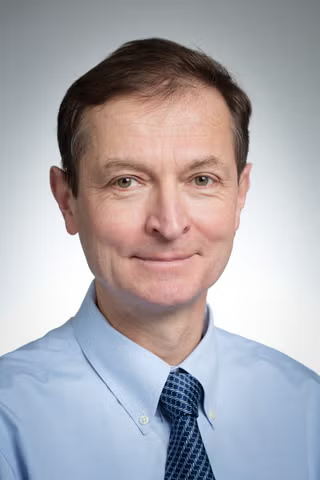
Biography
Dr. David Nairn is an associate professor in the Department of Electrical and Computer Engineering at the University of Waterloo.
His research is mainly in the field of electronic circuits, including analog and mixed signal circuit design, with an emphasis on analog-to-digital converters (ADCs), and digital-to-analog converters (DACs).
Research interests
- Analog and Mixed Signal Circuit Design
- Analog-to-Digital Converters (ADCs)
- Digital-to-Analog Converters (DACs)
- Circuit Design & VLSI
Chrystopher Nehaniv
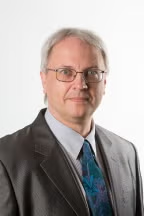
Biography
Dr. Chrystopher Nehaniv is a full professor in the Departments of Systems Design Engineering and Electrical and Computer Engineering at the University of Waterloo, a position he has held since August 2018. A mathematician, computer scientist, and complex adaptive systems researcher, Dr. Nehaniv is also affiliated with the University of Hertfordshire in the United Kingdom, where he previously served as Director of the Centre for Computer Science & Informatics Research. There, he led research in the Algorithms, Adaptive Systems, and Wolfson Royal Society Biocomputation Research Groups as a professor of mathematical and evolutionary computer sciences.
Before moving to Canada, Dr. Nehaniv was a full professor at the University of Aizu in Japan and held visiting professorships in mathematics at Ibaraki National University, Japan, and the Institute for Mathematics & Informatics at the University of Debrecen, Hungary. He was also a postdoctoral research fellow and lecturer in mathematics at the University of California, Berkeley.
Dr. Nehaniv is the founder of the Waterloo Algebraic Intelligence & Computation Laboratory (WAICL) and, alongside Dr. Kerstin Dautenhahn, co-founded the University of Waterloo's Social and Intelligent Robotics Research Laboratory (SIRRL). He is a member of the Waterloo AI Institute and serves on the steering committee of the Waterloo Institute for Complexity and Innovation (WICI).
An active contributor to the academic community, Dr. Nehaniv is an associate editor for BioSystems, IEEE Transactions on Cognitive and Developmental Systems, Interaction Studies, and Complexity. He previously served as topic editor-in-chief for The International Journal of Advanced Robotic Systems in the areas of AI robotics and human-machine/robot interaction. He has been involved with the IEEE Task Force for Artificial Life and Complex Adaptive Systems since its inception in 2003, serving as Chair from 2012 to 2018 and as Vice Chair since 2018. He is also a member of the IEEE Cognitive and Developmental Systems Technical Committee (2019-present) of the IEEE Computational Intelligence Society.
Research interests
- Algebraic Methods in Algorithms & Applications
- Artificial Intelligence
- Artificial Life & Complex Adaptive Systems
- Algebra & Discrete-Event Dynamical Systems:
- Automata, Permutation Groups, Transformation Semigroups, Interaction Machines, Models of Time
- Systems Biology & Neuroscience: Mathematical & Computational Methods
- Gene-Regulatory Networks & Differentiated Multicellularity
- Interactive Systems Design
- Cognitive Architectures for AI Robotics
- Enactive Experiential & Temporally Extended Intelligence
- Evolvability
- Cognitive\/Social\/ Skill & Linguistic Development in Animals & Artifacts
- Dynamic Networks
- Whole-Part Relations\/Natural Subsystems
- Global Hierarchical Coordinate Systems for Understanding\/Prediction\/Manipulation in STEM
Mahla Poudineh
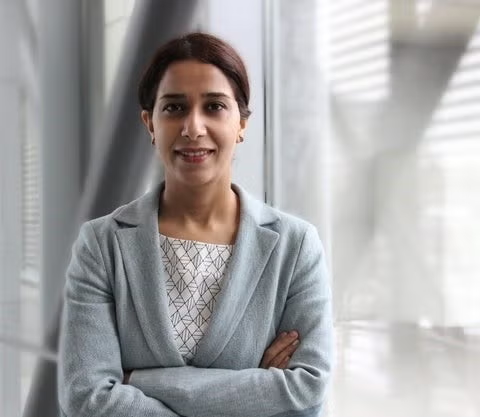
Biography
Dr. Mahla Poudineh is an associate professor and director of the Integrated Devices for Early Disease Awareness and Translational Applications (IDEATION) Lab in the Department of Electrical and Computer Engineering at the University of Waterloo. She holds a Tier 2 Canada Research Chair in Health Monitoring BioNano Devices.
Dr. Poudineh earned her PhD in Electrical Engineering, with a minor in Biomedical Engineering, from the University of Toronto in 2016. Before joining UWaterloo, She completed postdoctoral training at the University of Toronto's Department of Pharmaceutical Science in 2017 and at Stanford University’s School of Medicine in 2019.
She holds both a B.Sc. and M.Sc. in Electrical Engineering from the University of Tehran, Iran, awarded in 2010 and 2012, respectively. Her research focuses on developing bio-sensing technologies for therapeutic and diagnostic applications, with a particular emphasis on translating biomedical devices into clinical settings.
Research interests
- Real-time bio-sensing approaches for detection of small molecules
- Microfluidic-based integrated devices for therapeutics and diagnostics purposes
- Implantable micro-devices for cancer treatment
- Circulating tumor cell phenotypic characterization
- Stem cell profiling and characterization
- Translating biomedical devices for clinical use
- Silicon micro-machining for developing bio-MEMS and bio-NEMS devices
Omar Ramahi
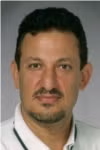
Biography
Dr. Omar Ramahi is a professor in the Department of Electrical and Computer Engineering at the University of Waterloo, and is the Director of the Advanced Concepts Research Laboratory.
His research interests include radiating systems, renewable energy technology, biomedical applications of electromagnetic waves and fields, electromagnetic compatibility and interference, metamaterials and its engineering applications, and material measurements. In addition to his research, he co-founded Applied Electromagnetic Technology, LLC., and Wave Intelligence Inc.
Dr. Ramahi has received numerous awards as a result of his extensive research and teaching capabilities. He was recognized for his graduate research work with the 2010 University of Waterloo Award for Excellence in Graduate Supervision. Additionally, he was awarded the IEEE Electromagnetic Compatibility Society Technical Achievement Award in 2012. Dr. Ramahi is an elected IEEE Fellow.
He has written over 450 journal and conference papers on electromagnetic phenomena and computational techniques. EMI/EMC Computational Modeling Handbook is one of the notable books that Dr. Ramahi co-authored.
Research interests
- Radiating Systems
- Theoretical and Computational Electromagnetics
- Electromagnetic Compatibility
- Interference and Electronic Packaging
- Biomedical Applications of Electromagnetics
- Photonics
- Material measurements
- Antennas, Microwaves & Photonics
- Medical imaging
- Scanning
- Energy harvesting/bio-energy
- Renewable energy
- Sensors and devices
- Wireless communications/networking
Derek Rayside

Biography
Derek Rayside is an Associate Professor in the Department of Electrical and Computer Engineering and is cross-appointed to the School of Computer Science at the University of Waterloo. He is the Faculty Advisor for Watonomous, the autonomous vehicle student design team in the SAE AutoDrive Challenge. Professor Rayside also taught the inaugural SE Ideas Clinic Activity in the Fall 2018 term.
His research interests include software engineering, lightweight formal methods, visualization, verification, specification, programming languages, static and dynamic program analysis, and software design extraction or reverse engineering. Additionally, Professor Rayside’s interests also include: engineering design – comprised of decision support, design evolution and multi-objective optimization, autonomous vehicles, and blockchain, specifically verification of Smart Contracts.
He has published in venues such as the ACM/IEEE International Conference on Software Engineering (ICSE), the ACM/IEEE International Conference on Automated Software Engineering (ASE), the International Conference on Abstract State Machines, Alloy, B, TLA, VDM, and Z (ABZ), and the ACM International Conference on Generative Programming: Concepts & Experience (GPCE).
Research interests
- Software engineering
- debugging
- lightweight formal methods
- visualization
- verification
- specification
- programming languages
- static and dynamic program analysis
- software design
- extraction\/reverse engineering
- Engineering Design
- decision support
- design evolution
- multi-objective optimization
- Cybersecurity
- Infrastructure integrity
- autonomous vehicles
- blockchain, specifically verification of Smart Contracts
Manoj Sachdev
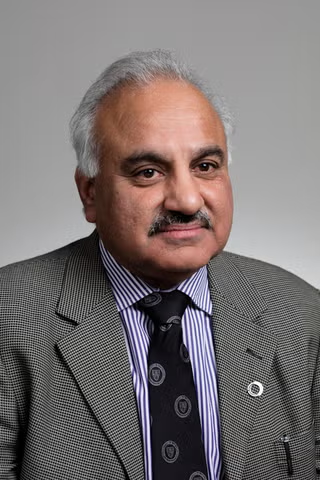
Biography
Dr. Manoj Sachdev is a professor in the Department of Electrical and Computer Engineering at the University of Waterloo.
His research interests include low-power and high-performance digital circuit design, mixed-signal circuit design, and test and manufacturing issues of integrated circuits. He has contributed to over 180 conference and journal publications and has written 5 books. He also holds more than 30 granted US patents.
Dr. Sachdev, along with his students and colleagues, has received several international research awards. He is a Fellow of the Institute of Electrical and Electronics Engineers (IEEE) and a Fellow of the Engineering Institute of Canada. Dr. Sachdev serves on the editorial board of the Journal of Electronic Testing: Theory and Applications. He is also a member of the program of the IEEE Custom Integrated Circuits Conference.
Research interests
- Digital circuit design for low power
- low voltage applications
- High performance mixed-signal circuit design
- Robust design practices for VLSI
- VLSI testing and design
- VLSI quality
- VLSI reliability
- VLSI improvement techniques
- Circuits Design & VLSI
- Cybersecurity
- Application security
- Network security
Derek Wright
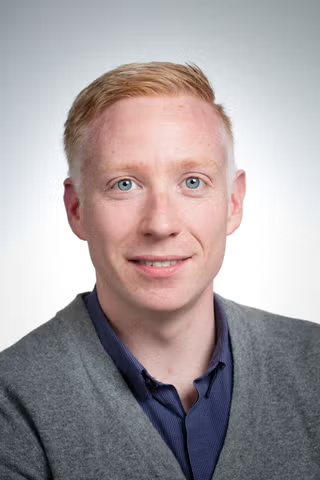
Biography
Dr. Derek Wright is an Associate Professor, Teaching Stream in the Department of Electrical and Computer Engineering and currently serving as the Director of Mechatronics Engineering. He also serves as the faculty advisor for the Waterloo Aerial Robotics Group. His research is in Digital ICs (especially spiking neural networks), Medical Imaging Physics, and Multidomain Modeling and Simulation. Dr. Wright is interested in productization and commercialization efforts related to this research and to student initiatives.
Research interests
- Neuromorphic hardware
- VLSI
- Multidomain modeling and simulation
Liang-Liang Xie
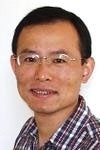
Biography
Dr. Liang-Liang Xie is a Professor in the Department of Electrical and Computer Engineering at the University of Waterloo.
Dr. Xie’s research interests span wireless networks, information theory, adaptive control, system identification, and Shannon theory. He has published extensively in leading journals, including IEEE Transactions on Information Theory and IEEE Journal on Selected Areas in Communications. His conference contributions have been presented at major events such as the IEEE International Conference on Communications (ICC), IEEE Globecom, and the IEEE International Symposium on Information Theory (ISIT).
Research interests
- Information theory
- Adaptive control
- System identification
- Communication & Information Systems
- Wireless communications/networking
En-Hui Yang

Biography
Dr. En-Hui Yang is a professor in the Department of Electrical and Computer Engineering at the University of Waterloo and the founding Director of the Leitch-University of Waterloo Multimedia Communications Lab. He is also the co-founder of SlipStream Data Inc. (now a subsidiary of BlackBerry Inc., formerly known as Research In Motion) and a former associate editor for IEEE Transactions on Information Theory. He previously held a Tier 1 Canada Research Chair in Information Theory and Multimedia Data Compression.
Dr. Yang is known for co-developing the Yang-Kieffer algorithm, a numerical set of rules that use grammar-based coding to achieve lossless compression of text and image files. He is also the co-inventor of soft decision quantization (rate distortion optimization quantization or trellis quantization), an efficient coding technology used in image and video applications to improve compression, with widespread use in products like smartphones and web browsers.
His research interests span multimedia compression, information theory, digital communications, image and video coding, image understanding and management, big data analytics, information security, and deep learning. His work aims to develop technologies that enhance the storage capacity of computers, accelerate and improve the reliability of data transmission, improve data security, and make big data more understandable.
Dr. Yang is a Fellow of the Canadian Academy of Engineering, a Fellow of the IEEE, and a Fellow of the Royal Society of Canada. In 2024, he was honored with the title of 'University Professor' by the University of Waterloo in recognition of his exceptional scholarly achievements and international pre-eminence.
Research interests
- Multimedia Data Compression
- Coding & Modulation
- Information Theory
- Digital Communications
- Description Complexity Theory
- Communication & Information Systems
- Source & Channel Coding
- Image & Video Coding
- Multimedia Communications
- Data Analytics
- Information Security
- Deep Learning
Alfred Yu

Biography
Dr. Alfred Yu is the Interim Associate VP, Partnerships, Entrepreneurship & Commercialization at the University of Waterloo. He is a faculty member in the Department of Electrical and Computer Engineering (ECE) and holds cross-appointments in the Faculties of Pharmacy and Applied Mathematics. Dr. Yu is the Director of the NSERC CREATE Program on Next-Generation Innovations in Ultrasonics (N-GENIUS), an Associate Director of the Center for Bioengineering and Biotechnology, and a Research Scientist at the Schlegel-UW Research Institute for Aging. He leads the Laboratory on Innovative Technology in Medical UltraSound (LITMUS).
Dr. Yu’s research focuses on ultrasound imaging and therapeutics. He began his academic career at the University of Hong Kong and relocated his research group to Waterloo in 2015. His work has earned numerous prestigious awards, including the IEEE Ultrasonics Early Career Investigator Award, the ISTU Frederic Lizzi Award, the Ontario Early Researcher Award, and several best paper prizes.
Dr. Yu is an NSERC Steacie Memorial Fellow and an elected fellow of prominent professional societies, including IEEE, AIUM, CAE, EIC, and AAIA. He currently serves as Editor-in-Chief of IEEE Transactions on Ultrasonics, Ferroelectrics, and Frequency Control, Program Chair for the 2023 IEEE Ultrasonics Symposium, and Secretary of the AIUM Basic Science & Instrumentation Community. He has previously chaired the IUS Medical Ultrasound Group and the ISTU Education Committee and served on the boards of major ultrasound professional societies, including IEEE UFFC and ISTU. He was also an Associate Editor for Ultrasound in Medicine and Biology.
Research interests
- Ultrasound imaging: Advanced imaging algorithms; High-performance beamforming platforms; Flow phantom design
- Therapeutic ultrasound: Cellular dynamics studies; Wave-matter interactions; Nanotechnology
Adjunct faculty members participating in biomedical engineering research:
Chris Backhouse (Adjunct)

Biography
Chris Backhouse is an Adjunct Professor Emeritus in the Department of Electrical and Computer Engineering at the University of Waterloo. His research focuses on nano-biological technology-based quantum devices, medical diagnostics, and the development of miniaturized, microfluidic lab-on-a-chip systems.
After earning his degree from the University of British Columbia, Professor Backhouse pursued academic and industrial fellowships in electrochemistry at the university and in non-invasive medical imaging with CTF Systems. He collaborated with Applied Biosystems, a life sciences company, to develop large-scale microchips and fabrication technologies for the Human Genome Project. Additionally, he led a research team that created genetic analysis instruments now sold internationally.
Professor Backhouse’s work has been recognized with several prestigious awards, including the Summit Award for Project Achievement from the Association of Professional Engineers, Geologists, and Geophysicists of Alberta in 2008, and the National Award for an Engineering Project of 2009 from Engineers Canada. He has also published numerous articles in IEEE journals and other professional publications.
Research interests
- Quantum devices
- Biomedical engineering
- MEMS/MOEMS and CMOS integration
- Lab on chip
- Medical diagnostic devices
- Microfluidic devices
- Radio astronomy
- Sensors
- Microfabrication
- Remote sensing
- MEMS/NEMS
- Nanotechnology
George Freeman (Adjunct)

Biography
Dr. George Freeman is an Adjunct Professor Emeritus in the Department of Electrical and Computer Engineering at the University of Waterloo.
His research focuses on signal processing for digital communications, the development of optimal lossless data compression algorithms, and applications in storage and recognition for speech and image coding.
Beyond his research achievements, Dr. Freeman has been honored with the Dedicated Service Award from the Canadian Association of University Teachers, recognizing his outstanding service to academic staff associations.
Research interests
- Signal Processing
- Wavelet Analysis
- Medical Image Processing
- Speech Recognition
- Data Compression
George Shaker (Adjunct)

Biography
Dr. George Shaker is an adjunct associate professor in the Department of Electrical and Computer Engineering at University of Waterloo. He also oversees wireless activities in the sensors and devices lab at the UW-Schlegel Research Institute for Aging. Previously, he was with Research in Motion (BlackBerry). He was also with Georgia Institute of Technology. He has been the Principal Scientist and Head of Research at Spark Technology Labs (STL), since its founding in 2011. In 2017, George was selected by the office of the president of NSERC among a group of ten Canadian professors to discuss Canadian research advancement in the Internet of Things (IoT) area at the special NSERC-NRC-MOST meeting in Ottawa. In addition, prof. Shaker serves on the organizational committee of the French-Canadian Bioengineering School.
With more than fifteen years of industrial experience in technology, and about eight years as an adjunct faculty member leading projects related to the application of wireless sensor systems for healthcare, automotives, and unmanned aerial vehicles, Prof. Shaker has many design contributions in commercial products available from startups and established companies alike. A sample list includes: COM DEV \, Blackberry, Google, Spark Tech Labs, Bionym, Lyngsoe Systems, ON Semiconductors, Ecobee, Medella Health, NERV Technologies, Novella, Thalmic Labs (North), General Dynamics Land Systems, and Omron Technologies.
George has received multiple recognitions and awards, including the NSERC Canada Graduate Scholarship (sole winner in the area of Electromagnetics across Canada, 2007-10, first UW student to receive the scholarship in EM), the Ontario Graduate Scholarship (2007, 2010), the European School of Antennas Grant at IMST-GmbH (2007), the IEEE AP-S Best Paper Award (2009, 3, first @ UW), the IEEE AP-S Honorable Mention Paper Award (Twice, 2008, 2011), the IEEE Antennas and Propagation Graduate Research Award (2008/2009, first @ UW), NSERC CGS-FSS (2009/2010, sole winner from UW Engineering), the IEEE MTT-S Graduate Fellowship (2009, first UW student to receive the fellowship), and the Electronic Components and Technology Best of Session Paper Award (2010). Two paper he co-authored in IEEE Sensors were among the top 25 downloaded papers on IEEEXplore for several consecutive months (2012/2017). He was the supervisor of the team winning the third best design at IEEE APS 2016, APS 2017 HM paper award, 2018 CVS Best Paper, and two IEEE APS Research Awards.
Research interests
- Antennas
- RF
- Wireless
- mm-Waves
- Sub-THz
- Sensors
- BioElectromagnetics
- Telematics
- V2X Communications
- RF\/microwave\/millimeter wave\/Terahertz (THz) circuits and antenna systems
- Radio frequency (RF)\/microwave packaging and Electromagnetic compatibility
- (EMC)\/Electromagnetic interface (EMI) analyses
- Vehicle and UAV wireless communications, navigation systems, and telematics systems
- Bio-wearable electronics and systems
- Energy harvesting systems
- Complex propagation and scattering phenomena
- Devices and novel electromagnetic materials and wireless sensors
- Bioengineering
- Biomedical Engineering
Lin Tan (Adjunct)

Biography
Lin Tan is an Adjunct Associate Professor in the Department of Electrical and Computer Engineering at the University of Waterloo. She earned her Ph.D. from the University of Illinois at Urbana-Champaign.
Dr. Tan serves as an Associate Editor for IEEE Transactions on Software Engineering (2017-present) and as an Editor for the Springer Empirical Software Engineering Journal (2015-present). She has also been the program co-chair for MSR 2017, ICSE-NIER 2017, and ICSME-ERA 2015. Her co-authored papers have earned notable accolades, including the ACM SIGSOFT Distinguished Paper Award at MSR 2018, FSE 2016, and IEEE Micro's Top Picks in 2006.
Dr. Tan has received several prestigious awards, including the NSERC Discovery Accelerator Supplement Award, the Ontario Early Researcher Award, the Ontario Professional Engineers Award — Engineering Medal for Young Engineer, the University of Waterloo Outstanding Performance Award, two Google Faculty Research Awards, and the IBM CAS Research Project of the Year Award.
Research interests
- Software engineering
- Software reliability
- Defect detection and repair